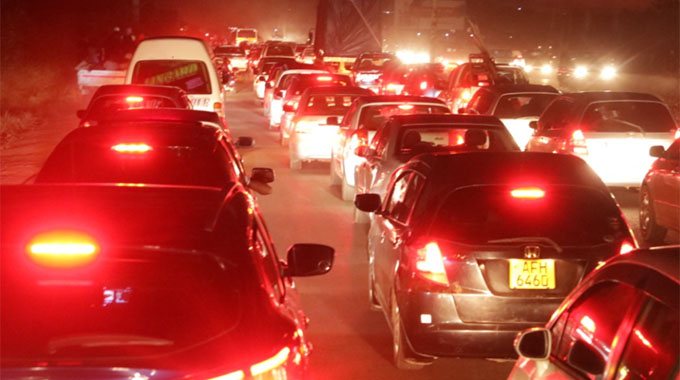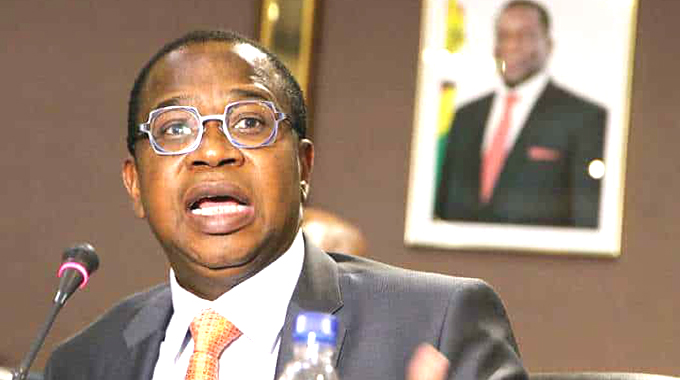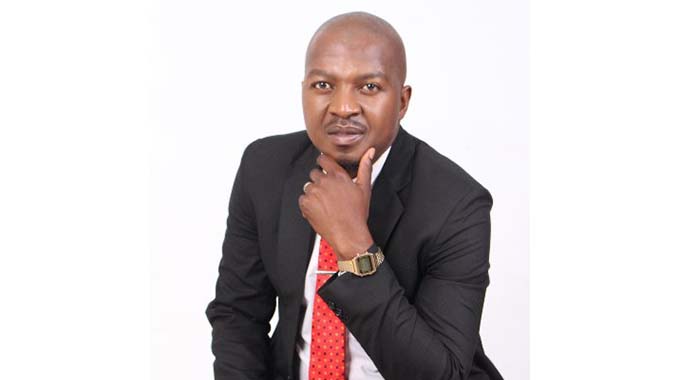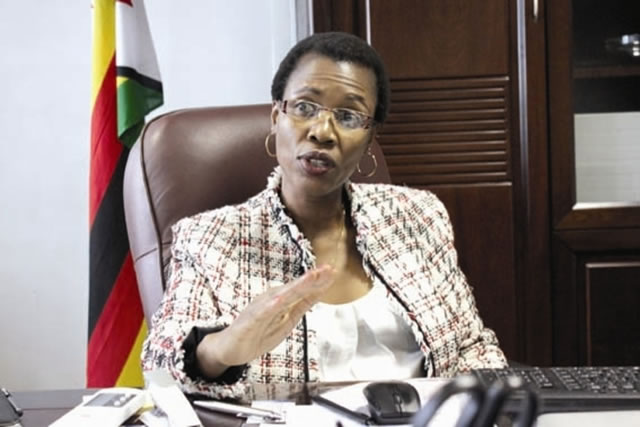EDITORIAL COMMENT: Traffic congestion can be fixed by range of measures

The growing traffic congestion in Zimbabwean cities, and especially Harare, is not going to diminish unless a wide range of measures are adopted and the new inter-ministerial committee set up to ameliorate and solve the problem will not find a single magic bullet that will fix things.
As Cabinet noted this week, the congestion is growing because of a number of factors with the increase in economic activities as the Government puts Zimbabwe on a growth curve being the underlying driving force. Activities means more business traffic, more trucks and vans, and more people able to afford cars and to run cars.
So the pressure on the roads can only increase. Prosperity is the cause and growing prosperity cannot be termed a problem, but rather a reason for finding other solutions. But that prosperity will also generate taxes and rates that will assist in paying for solutions.
Many of the factors that reduced congestion in recent years were problems, not solutions. Shortages of fuel cut the number of trips, the high-level lockdowns used to combat the first two waves of Covid-19 meant far fewer people had to travel and a lot of business activity was curtailed. Those problems have been solved, so the vehicles are back.
It has not been a totally direct equation that more prosperity meant more congestion. One major gain, that has helped generate part of a breathing space, was the resurrection of Zupco as an urban bus company, something that needed both Government money, to buy buses that Zupco could lease, and Government intervention, the biggest being the lockdown rules that required private owners of kombis and buses wanting to maintain urban transport businesses to register with Zupco and, importantly, follow Zupco controls and rules.
That move had the immediate effect of seeing larger buses on routes, which cut back the number of vehicles needed, but more importantly ending the indiscipline that saw many roads totally clogged with kombis parked or waiting for passengers while creating their own routes.
So one strand in the committee’s work will be to figure out how to grow and upgrade Zupco. Every large city in the world relies on an efficient public transport pubic system to get people to and from work. In developed countries this means having such a system that is so good that even the rich and powerful leave their cars at home and take the metro, bus, train or tram to work, not to save money but because it is faster and more convenient.
If Harare and its surrounding towns had a really good public transport system far more people would use it, and leave their cars at home or in a car park next to the nearest suburban terminus. A single bus can replace several dozen cars. There will need to be some cultural changes as well, since many with a car prefer using a car, but once you have good public transport and dedicated bus lanes the time savings will see that switch.
A second strand is the growing traffic jams at intersections of main roads, with broken traffic lights a major cause.
Some benefit can be gained quickly by fixing these although quite a few outside the city centre can and should be replaced by roundabouts, which give far better traffic flows.
At the same time the jams caused by traffic inching forward at 5km/h over potholes is being fixed already in the Government’s emergency action.
A third strand is the need to overcome the peculiar town planning of most Zimbabwean cities. This is built around good arterial roads into the city centre, but very modest links around the city centre. So a lot of traffic that wants to go from one side or a city to the other has to pass through the city centre. Even when there are partial ring roads, these are usually narrower than arterial roads and quickly clog, becoming congested in their turn.
So we are now talking about engineering, building by-pass roads. For example, in Harare, the southern ring road, Harare Drive South, that would link the suburbs where most people live with the industrial sites where many people work has been on the plans for decades, and the plans were recently upgraded. Now bulldozers are needed to make it a reality. But we are moving into the realms of serious money, although all that means is the timing of the new roads; they will be needed.
Harare city centre presents some peculiar problems, that need to be addressed as a fourth strand. One-way streets have helped make better use of the road network laid down by the mid-1970s but have emphasised the problems of the chokepoints because so little has been done since the 1970s by road engineers in the city centre.
So we have Samora Machel Avenue which is three traffic lanes in each direction, except for a handful of blocks at its eastern and western ends. Yet at the eastern end, the congestion suddenly vanishes when those who have inched along the two lanes in each direction reach the junction with Emmerson Dambudzo Mnangagwa Road, and split fairly evenly into that road or continue down the two lanes in each direction in the Samora Machel Avenue extension, in effect seeing two lanes going out suddenly doubling to four.
In the west of the city centre it is just as bad, going from three lanes in each direction down to two for a few blocks and then back to three in each direction as you leave the city centre. Widening the two ends of that major avenue would be fairly cheap and have immediate benefit in eliminating two choke points.
In the west we have the primary western exit road, Jason Moyo Avenue, turning from the four lanes of the one-way west bound avenue into two lanes in each direction, for just two blocks, creating a choke point that sees a jam extend all the way to Sam Nujoma Street and then north up that street. The problem, of course, is that Harare City Council never exercised its option to buy out about four properties at the western end of Nelson Mandela Avenue to extend that one-way street to Abdel Gamal Nasser Road and so open up Jason Moyo Avenue.
There is plenty of land to widen Emmerson Mnangagwa Road South and Gamal Nasser Road to carry the rush hour loads once the entry and exit points to the city centre are fixed. There are other examples in the southern exits.
Some solutions, such as a multiplicity of flyovers, are not needed yet although the planned replacement of the Mbudzi roundabout should come sooner rather than later and some sort of tunnels are needed to allow continuous two-way flow where Julius Nyerere Way, Kenneth Kaunda Avenue, Seke Road and Fidel Castro Road meet.
But basically, in Harare anyway, the committee can start making rapid improvements for modest costs by keeping the pressure on the Zupco upgrade and sorting out the choke points at the exits to Harare city centre.
Medium term plans can be more ring roads and by-passes, and not just in Harare.











Comments